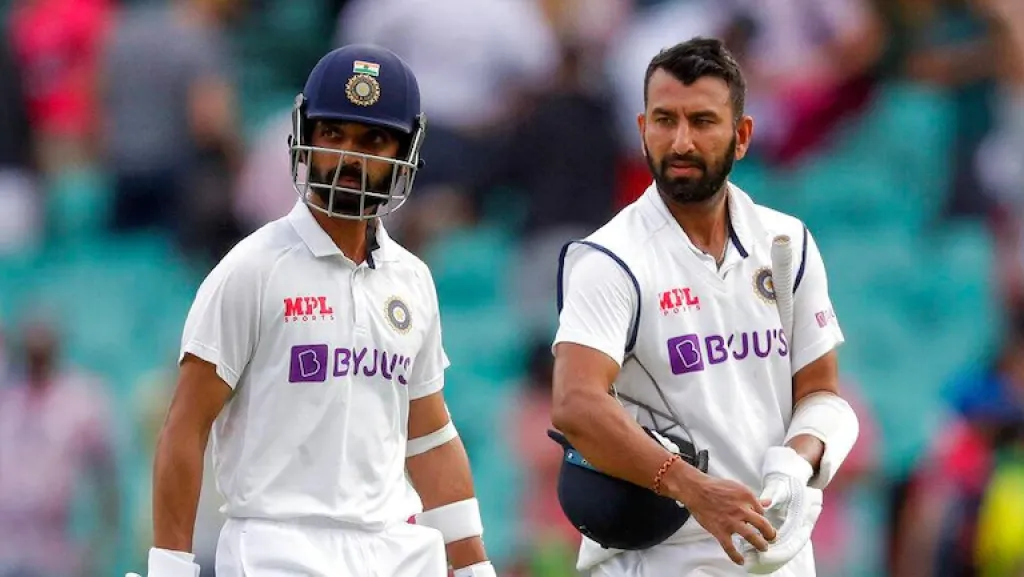In recent years the word ‘intent’ has been widely discussed in Indian cricket, especially in the Test format. On multiple occasions we have seen the team management as well as skipper Virat Kohli stressing on the intent factor while talking about batting strategy on challenging conditions. However, often people tend to confuse ‘intent’ with ‘approach’ and criticisms surrounding India’s batting failure in the first innings of the ongoing Sydney Test is a classic testimony to that.
Despite getting an impressive 70-run opening stand between Rohit Sharma and Shubman Gill, India witnessed yet another dramatic batting collapse at the SCG on Saturday (January 9) when they were bowled out for just 244 in reply to Australia 338. The Indians, in fact, lost their last six wickets for just 49 runs. However, instead of the lack of contribution from the lower-middle order, the talking point of this batting failure has been the approach (not intent, which means willingness) of some of the senior batters who took charge after the openers got out.
Of course, here the knocks of Cheteshwar Puajara (50 off 176 balls, his slowest half-century ever) and Ajinkya Rahane (22 off 70 balls) have been referred and the bulk of the blame is on Pujara who faced the most number of the deliveries in the Indian innings.
“I don’t think it was the right approach, I think he needed to be a bit more proactive with his scoring rate because I felt it was putting too much pressure on his batting partners.”
That was Ricky Ponting replying to a fan question regarding Pujara’s innings on Twitter. Thankfully, instead of questioning Pujara’s “intent” or willingness of scoring runs he used the term “approach”, which means Ponting criticised the strategy India’s No.3 adopted during his innings.
Well, there is no doubt that it has been a two-paced wicket at the SCG on which a lot of batsmen from both teams have struggled to get going. Especially on Day 3, the bounce was inconsistent from the three quarter length. In fact, Rishabh Pant and Ravindra Jadeja were both hit on their arms while facing the fast bowlers. For Jadeja the blow has caused a thumb injury, which has now ruled him out from six weeks.
However, amid these testing conditions we have to agree that the Aussies have looked much more proactive in finding run scoring opportunities than their counterparts. Though we shouldn’t forget that the visitors have faced a stronger, quicker, taller and more accurate bowling attack.
At the fag end of Day 2, when Pujara came to crease, there were 18 overs left for Stumps. Soon he was joined by Rahane and the duo started presenting a dead bat to survive a fierce spell of fast bowling from the Australia pace trio. Quite understandably they were playing for the close of play. But they were so much into the shell that Rahane even defended a half volley from Josh Hazelwood. The partnership scored mere 11 runs in the last 12.5 over of the Day.
Following a cautious start on Day 3 when it seemed Rahane was looking to step on the accelerator, he was chopped on against Cummins and soon Hanuma Vihari was brilliantly run out by Hazlewood. At 4 for 142, the deficit was close to 200 runs and perhaps at that point a set Pujara could have looked for more run scoring opportunities instead of his traditional waiting for the bad ball tactics – a method which worked for him in the last series on Australian soil and in other parts of the world.
“At one stage he [Pujara] had been out there for 200 balls or 150 balls and I looked up there thinking they are still 200 away from our first-innings total,” said Cummins after the day’s play. “So if things go that way and we can keep bowling well, you’re not overly bothered. He is someone you know you are going to have to bowl a lot at. I think we got our head around that this series, for him to score runs we are going to make it as hard as possible. Whether he bats 200 or 300 balls, just try and bowl good ball after good ball, and challenge both sides of his bat.”
This assessment from Cummins can be a part of Australia’s mind games as the hosts would perhaps like Pujara to come out of his comfort zone.
However, midgame or not but the criticism certainly has some merit for sure as on these difficult pitches against good attacks, you are bound to get a good ball. Hence as a batsman you need to score as many runs as possible before getting that jaffa, especially when your team is almost 200 runs behind in the first innings and slotted to bat fourth on that surface.

